#musophaga
Text

November 29, 2022 - Violet Turaco or Violaceous Plantain Eater (Musophaga violacea)
These turacos inhabit forests, forest edges, and savannas, often near water, in the southern part of West Africa. They feed on fruit, especially figs, as well as berries, seeds, and possibly invertebrates. Breeding between April and October, they build fragile platform nests from sticks and twigs in trees, where females lay clutches of two eggs. Both parents incubate the eggs and feed the chicks.
86 notes
·
View notes
Photo
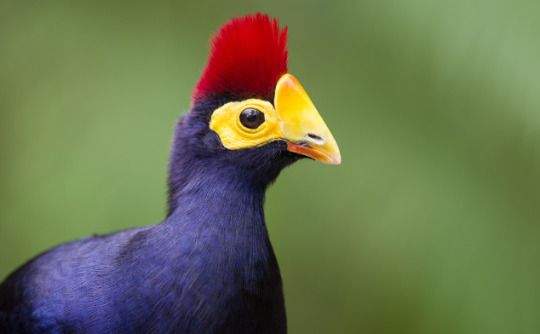
Ross’s Turaco
Musophaga rossae
#musophaga rossae#ross’s turaco#turaco#musophaga#musophagidae#musophagid#musophagiformes#aves#bird#ornithology#animal#animalia#wildlife#nature
19 notes
·
View notes
Photo

Ross's turaco or Lady Ross's turaco #Musophaga #rossae #Ross's #turaco #LadyRoss #turaco #bird #ravisanath #ravisanathsphotography www.ravisanath.com https://www.instagram.com/p/B2j7FVQBVqI/?igshid=14q4ejekcs51f
0 notes
Photo


Violet turaco (Musophaga violacea)
The violet turaco is a large turaco, a group of African near-passerines. It is resident in West Africa, and has an extremely large range from Senegal through to the Nigeria, with an isolated population in Chad and Central African Republic. It occurs in tropical savannas, wetlands, woodlands and forests. These are unmistakable birds, but shy and often inconspicuous in the treetops. They are approximately 48 cm long, including a long tail and a 4 cm bill. Turacos are social birds, travelling in flocks of around ten to twelve individuals. They are not strong fliers but they can run quickly through the branches.
photo credits: DickDaniels, Doug Janson
#violet turaco#Musophaga violacea#turaco#bird#zoology#biology#biodiversity#science#wildlife#nature#animals#cool critters
1K notes
·
View notes
Photo
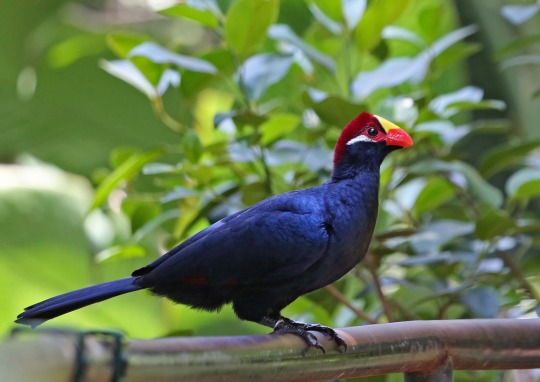
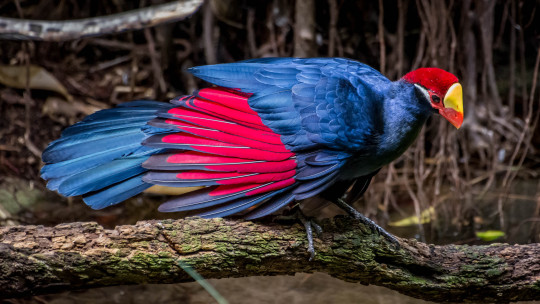
Violet Taco Turaco
Do you like plantains? The Violet Turaco (Musophaga violacea) doesn’t, but that hasn’t stopped it from becoming known as the plantain eater! These gorgeous birds are native to a wide range in the tropical forests of West Africa. Their coloration comes from a special pigment called ‘turcoverdin’, which is unique to the turaco group. Despite their brilliant plumage, you’re unlikely to see much of them-- they’re incredibly shy, and often reside high in the trees where they can feed on their usual diet of fruit and figs. As Turacos go, they’re some of the largest, ranging from 12-14 ounces and flaunting a length of a whopping 21-24 inches (including the tail). They also live fairly long lives; up to thirty years in captivity. They typically live in small flocks but nest in solitary, monagamous pairs. Each pair produces 2 eggs, and the chicks that hatch grow quickly. Within a few days they’re can leave the nest and climb from branch to branch using specialized claws. Within 4-5 weeks they’re able to fly. Most adults, however, prefer to run along the branches and only fly in short bursts.
Conservation status: Although the Violet Turaco is captured for trade in several of its native countries, the population as a whole is stable.
12 notes
·
View notes
Text

Senufo Oracle Figure (Kafigeledjo), Ivory Coast
the head adorned with Domestic Chicken (Gallus gallus) feathers, and wearing a pendant of a Violet Turaco (Musophaga violacea) skull.
Allan Stone Collection, Sotheby's
5 notes
·
View notes
Photo

Ross’s Turaco (Musophaga rossae) - photo by Jim Frazee
120 notes
·
View notes
Photo


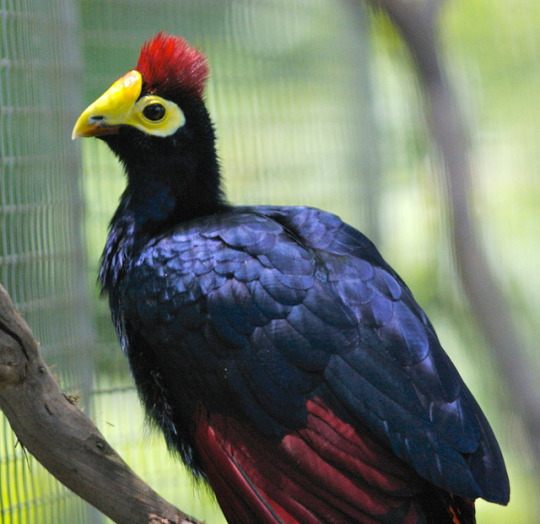
#Feathursday: Name That Bird - Answer
The Answer: The bird on the left is a Bali Myna (Leucopsar rothschildi) and the bird on the right is a Ross’s Turaco (Musophaga rossae)
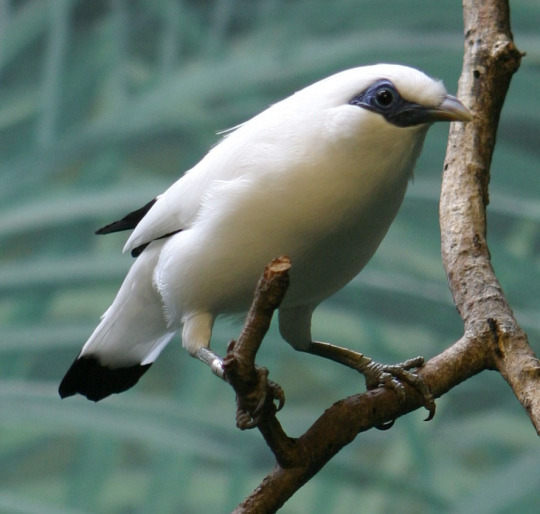
The Bali Myna (Leucopsar rothschildi) is also known as the Bali Starling or Rothschild’s Mynah. It is a member of the Starling family. This bird is native to the Island of Bali and is critically endangered in the wild, but captive breeding is gradually helping to keep this striking bird around.

The Ross’s Turaco (Musophaga rossae) is found throughout much of Central Africa. The flamboyant colors are shared by both the male and female of the species. These birds are considered pests in many areas because they don’t discriminate between wild fruit and people’s gardens.
See our other Feathursday posts
So, how did you do with identifying these birds?
#feathursday#name that bird#african bird#indonesian bird#ross's turaco#bali myna#birds#uwm archives#zoological society of milwaukee county#answer
9 notes
·
View notes
Text
Zookeeping Nonsense
So I was at the zoo with my gf the other day and we were joking about all the birds/beasts we eventually want to keep, and she made a passing comment about us needing our own zoo. Completely joking of course, but me being the incorrigible nerd that I am I started to wonder if my selection of favorites might actually be viable in a smaller zoo setting. So for those zookeepers or any other keepers of animals on my list, your opinions on it would be most appreciated. Keep in mind, this list isn’t all of my favorite animals or even all the animals I want to keep, but those I would feel relatively confident in providing adequate care for (with help) and that would do well in captivity. I do not actually intend on having a zoo, I just want to see your thoughts.
Mammals
-Red kangaroo (Macropus rufus)
-Eastern grey kangaroo (Macropus giganteus)
-Red necked wallaby(Macropus rufogriseus)
-Giant anteater (Myrmecophaga tridactyla)
-Tamandua (Tamandua spp.)
-Grey fox (Urocyon cinereoargenteus)
-Bat eared fox (Otocyon megalotis)
-Coatimundi (Nasua spp.)
-Greater kudu (Tragelaphus strepsiceros)
-Giant eland (Taurotragus derbianus)
-Warthog (Phacochoerus africanus)
-Bactrian Camel (Camelus bactrianus)
-Reeve’s muntjac (Muntiacus reevesi)
-Blue duiker (Philantomba monticola)
-African crested porcupine (Hystrix cristata)
-Lowland paca (Cuniculus paca)
-Red rumped agouti (Dasyprocta leporina)
-Llama
-Alpaca
-Barbados blackbelly sheep
-Spanish and nubian goat
-Kunekune pig
Birds
-Ruddy Duck (Oxyura jamaicensis)
-Mandarin duck (Aix galericulata)
-Pygmy Goose (Nettapus auritus)
-Black Necked Swan (Cygnus melancoryphus)
-Muscovy duck (Cairina moschata)
-Victoria Crowned Pigeon (Goura victoria)
-Pheasant Pigeon (Otidiphaps nobilis)
-Nicobar Pigeon (Caloenas nicobarica)
-Crested pigeon (Ocyphaps lophotes)
-Common Bronzewing (Phaps chalcoptera)
-Luzon Bleeding Heart (Gallicolumba luzonica)
-Kori Bustard (Ardeotis kori)
-Silver Pheasant (Lophura nycthemera)
-Lady Amherst's Pheasant (Chrysolophus amherstiae)
-Helmeted guineafowl (Numida meleagris)
-Wild Turkey (Meleagris gallopavo)
-Peacock (Pavo cristatus)
-Brush turkey (Alectura lathami)
-Rosses Turaco (Musophaga rossae)
-White cheeked turaco (Tauraco leucotis)
-Livingstone's turaco (Tauraco livingstonii)
-Red billed hornbill (Tockus erythrorhynchus)
-Laughing kookaburra (Dacelo novaeguineae)
-Superb starling (Lamprotornis superbus)
-Violet Starling (Cinnyricinclus leucogaster)
-Purple glossy starling (Lamprotornis purpureus)
-White crested laughing thrush (Garrulax leucolophus)
-Red-legged Honeycreeper (Cyanerpes cyaneus)
-Bearded Barbet (Lybius dubius)
-Red-crested Cardinal (Paroaria coronata)
-Pekin Robin (Leiothrix lutea)
-Emu (Dromaius novaehollandiae)
-Ostrich (Struthio camelus)
-Greater Rhea (Rhea americana)
Reptiles
-Blue tongue skink (Tiliqua scincoides)
-Shingleback Skink (Tiliqua rugosa)
-Monkey tailed skink (Corucia zebrata)
-Fire skink (Lepidothyris fernandi)
-Crested gecko (Correlophus ciliatus)
-Mossy prehensile tailed gecko
-Leachie Gecko (Rhacodactylus leachianus)
-Mourning gecko (Rhacodactylus chahoua)
-Fat tailed gecko (Hemitheconyx caudicinctus)
-Knob tailed gecko (Nephrurus spp.)
-Giant day gecko (Phelsuma grandis)
-Black and white tegu (Salvator merianae)
-Caiman lizard (Dracaena guianensis)
-Black spiny tailed iguana (Ctenosaura similis)
-Rhinoceros iguana (Cyclura cornuta)
-Gila monster (Heloderma suspectum)
-Mexican beaded lizard (Heloderma horridum)
-Long tailed boa constrictor (Boa constrictor longicauda)
-Rubber boa (Charina bottae)
-Carpet python (Morelia spilota)
-Boelen's python (Morelia boeleni)
-Black headed python (Aspidites melanocephalus)
-Cuviers Dwarf caiman (Paleosuchus palpebrosus)
-African spurred tortoise (Centrochelys sulcata)
-Matamata (Chelus fimbriata)
Amphibians
-Solomon island leaf frog (Ceratobatrachus guentheri)
-African bullfrog (Pyxicephalus adspersus)
-Horned frogs (Ceratophrys spp.)
-Budgett's frog (Lepidobatrachus laevis)
-Bumblebee dart frog (Dendrobates leucomelas)
-Dyeing dart frog (Dendrobates tinctorius)
-Green and black poison dart frog (Dendrobates auratus)
-Mimic Poison dart Frog (Dendrobates imitator)
-Vietnamese mossy frog (Theloderma corticale)
-Amazon milk frog (Trachycephalus resinifictrix)
-Waxy monkey tree frog (Phyllomedusa sauvagii)
@the-awkward-turt @thezookeepersdiary @thezookeeperslife @zookeeperproblems @zookeeperrick @zookeepingitreal @thechilidog @uroplatus @ccortez07
4 notes
·
View notes
Photo

Biodiversity Heritage Library | Flickr: https://flic.kr/s/aHsmb7jnzp
0 notes
Photo
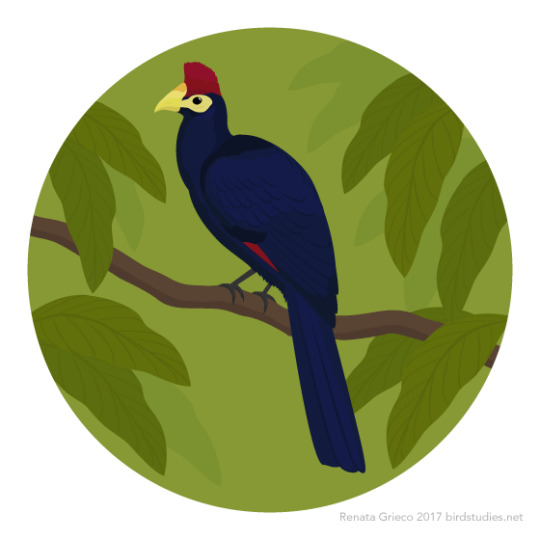
January 1, 2017 - Lady Ross’s Turaco or Ross's Turaco (Musophaga rossae)
Requested by: @hearthawk
Found in central and southern Africa, excluding the extreme southern and eastern part of the continent, these turacos mostly get around by running and hopping between branches rather than flying. Important seed dispersers, they eat fruits, berries, flowers, and foliage, along with some invertebrates, such as caterpillars, moths, beetles, snails, and termites. They are social birds, forming flocks of up to 30 individuals. Pairs build nests, incubate the eggs, and feed the chicks regurgitated fruit together, often assisted by other flock members.
#lady ross's turaco#ross's turaco#turaco#musophaga rossae#bird#birds#illustration#art#tropical#requests#birblr art
66 notes
·
View notes
Photo

Violet Turaco (Musophaga violacea). It is resident in West Africa, and has an extremely large range from Senegal through to the Nigeria, with an isolated population in Chad and Central African Republic. It occurs in tropical savannas, wetlands, woodlands and forests. Turacos are social birds, travelling in flocks of around ten to twelve individuals. They are not strong fliers but they can run quickly through the branches. . . #birdsofinstagram #birdfreaks #birds #bestbirdshots #nuts_about_birds #birder_unleashed #natgeowild #your_best_birds #planetbirds #ip_birds #kings_birds #bb_of_ig #instagood #photooftheday #picoftheday #smallbusiness #ghana (at Ghana)
#birdfreaks#birds#bestbirdshots#planetbirds#birdsofinstagram#kings_birds#nuts_about_birds#instagood#birder_unleashed#bb_of_ig#picoftheday#smallbusiness#your_best_birds#ip_birds#natgeowild#ghana#photooftheday
0 notes
Video
youtube
Violet turaco voice (Musophaga violacea) Exotic bird
0 notes
Photo

Ross´s turaco (Musophaga rossae)
Ross's turaco is a mainly bluish-purple African bird of the turaco family, Musophagidae. It is found in woodland, open forest and riparian habitats in Angola, Botswana, Burundi, Cameroon, Central African Republic, Democratic Republic of the Congo, Gabon, Kenya, Rwanda, South Sudan, Tanzania, Uganda, and Zambia.
photo credits: Ed Schipul
#ross´s turaco#Musophaga rossae#bird#turaco#zoology#biology#biodiversity#science#wildlife#nature#animals#cool critters
660 notes
·
View notes